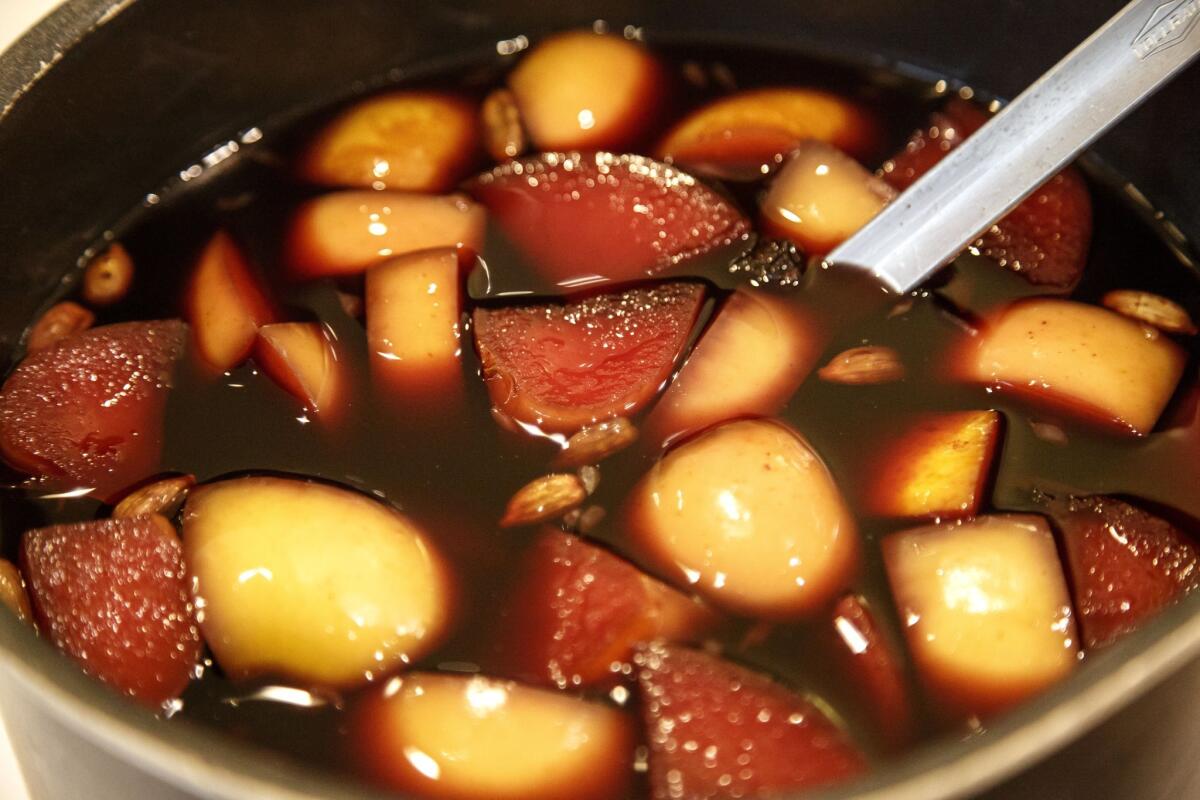Why you should be making <i>glühwein</i>, Austria’s warm, spiced wine for the holidays

A pot of warm, spiced wine prepared by Chef Bernhard Mairinger of BierBeisl Imbiss in downtown Los Angeles. In Austria, the wine is served outdoors at little stands, starting about the first week of December.
- Share via
When there’s a chill in the air, chef Bernhard Mairinger of BierBeisl Imbiss in downtown Los Angeles enjoys a glass of warm, spiced red wine. Called glühwein, the seasonal beverage is super easy to make (sort of like a hot sangria), but it really takes the edge off the cold. And in Austria, December can be cold.
Starting right about now, in Mairinger’s hometown, and all over Austria, little stands are set up outdoors to serve the spiced wine and roasted chestnuts. Usually, he says, you go with friends after church and meet at the glühwein stand.
“It’s so good standing around in the snow drinking hot wine, which is spiced with sugar, cinnamon, cloves, allspice and apples, the Austrian chef says. “And roasted chestnuts? That’s my favorite way to eat them, just out of the shell.”
Snow?
Well, you’ll just have to imagine it. But we can certainly do the roasted chestnuts part. And here’s Mairinger’s recipe for glühwein.
Total time: 15 minutes, plus steeping time | Serves 6
- 2 (750-milliliter) bottles dry red wine
- 1 cup sugar
- 1 cinnamon stick
- 3 whole cloves
- 1 whole allspice berry
- 1 star anise
- 1 orange, zest and juice
- 1 apple, diced (preferably Gala)
- Zest of 1/4 lemon
STEP 1
In a heavy-bottomed pot, combine the red wine, sugar, cinnamon, cloves, allspice, anise, orange zest and juice, apple and lemon zest over high heat. Bring to a boil, then remove from heat. Pour everything into a nonreactive container, cover and set in a cool, dry place for 1 to 2 days. Strain through a fine sieve or chinois into jars or bottles, and refrigerate until ready to drink. Reheat before drinking, and check the acidity of the wine before serving, adding more sugar if desired.
Each serving:
Calories 341; Protein 0; Carbohydrates 40 grams; Fiber 0; Fat 0; Cholesterol 0; Sugar 35 grams; Sodium 10 mg
Follow @sirenevirbila for more on food and wine.
ALSO:
Thirteen wines for the holidays at $25 or less
Courage and Craft liquor shop opens at Grand Central Market
Everything you need to know about Armagnac, France’s oldest brandy
More to Read
Eat your way across L.A.
Get our weekly Tasting Notes newsletter for reviews, news and more.
You may occasionally receive promotional content from the Los Angeles Times.







